National Air & Space Museum Explainer Series: Improving Described Sound Captions
Content Design (Web Accessibility)
2020
Transcription: Brigitte Ugarte
Transcription: Brigitte Ugarte
Revising YouTube content for audiences who are hard of hearing and/or have deafness
Case Study
[TURN CAPTIONS ON]
Updating older content
The Museum primarily uses YouTube to share NASM-related video content. While YouTube provides automated transcription, it is not 100% accurate. YouTube sometimes contains grammatical and spelling mistakes that do not represent the original content of our videos. Additional steps are necessary to make the video content fully accessible. However, the YouTube transcription provides information about the video’s timecodes, and we can edit them later.
NASM only uses manually formatted closed captions and transcription to ensure they are accessible to the widest possible audience.
Establishing Guidelines for Audiovisual Content
Outlining the basics
I transcribed three videos following ADA recommended guidelines and created a working document for the digital team to update for future use. I captured screen grabs and outlined my recommendations.Recommendations included:
-
Text must be in white and use a translucent black box to contrast the background.
-
Text should be written in mixed casing (capital and lowercase letters).
-
Captioned dialogue should only broken up into two lines.
-
Captions should not take up the width of the video.
-
Limit lines to 32 characters or less (1 to 16 words) including spaces.
Typographic rules for line breaking captions
In our first example, there are two screenshots of captioned videos. The first video displays text that takes up the width of the video and features no line breaks. The second video displays text broken up into two lines of captions. The first video will lose the viewer, for they may lose their place and reread the same line. Whereas, the second video allows the viewer to pause and let their eyes move to the next line. Hence, the information is clear and readable.
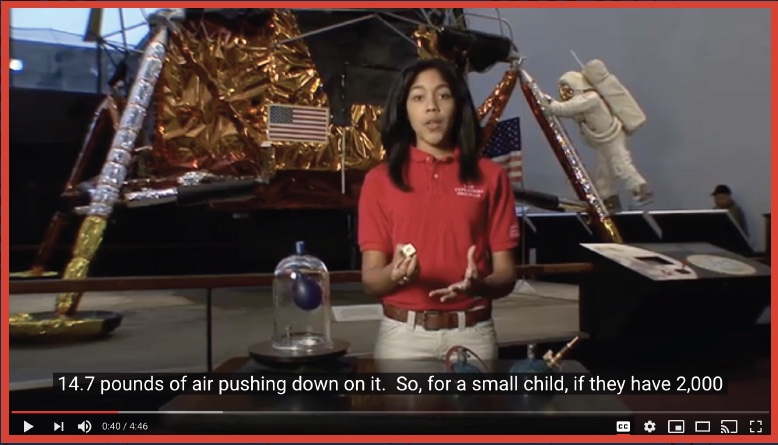
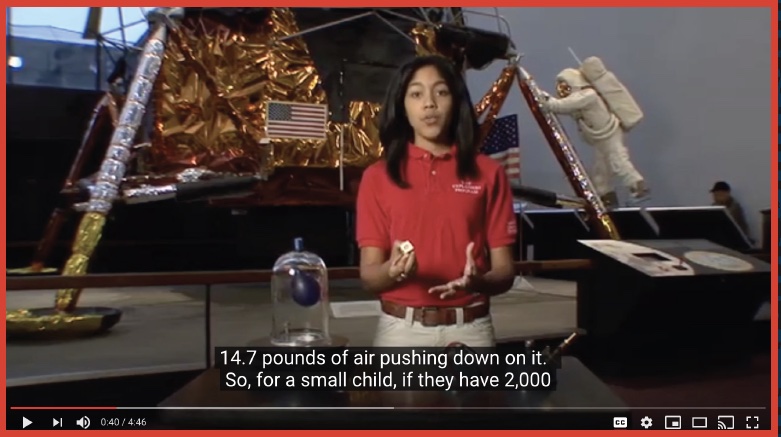
Other Stylistic Choices
The following are charts offering Do’s and Don’t’s for line breaking a caption to allow the transcription to be readable on screen.
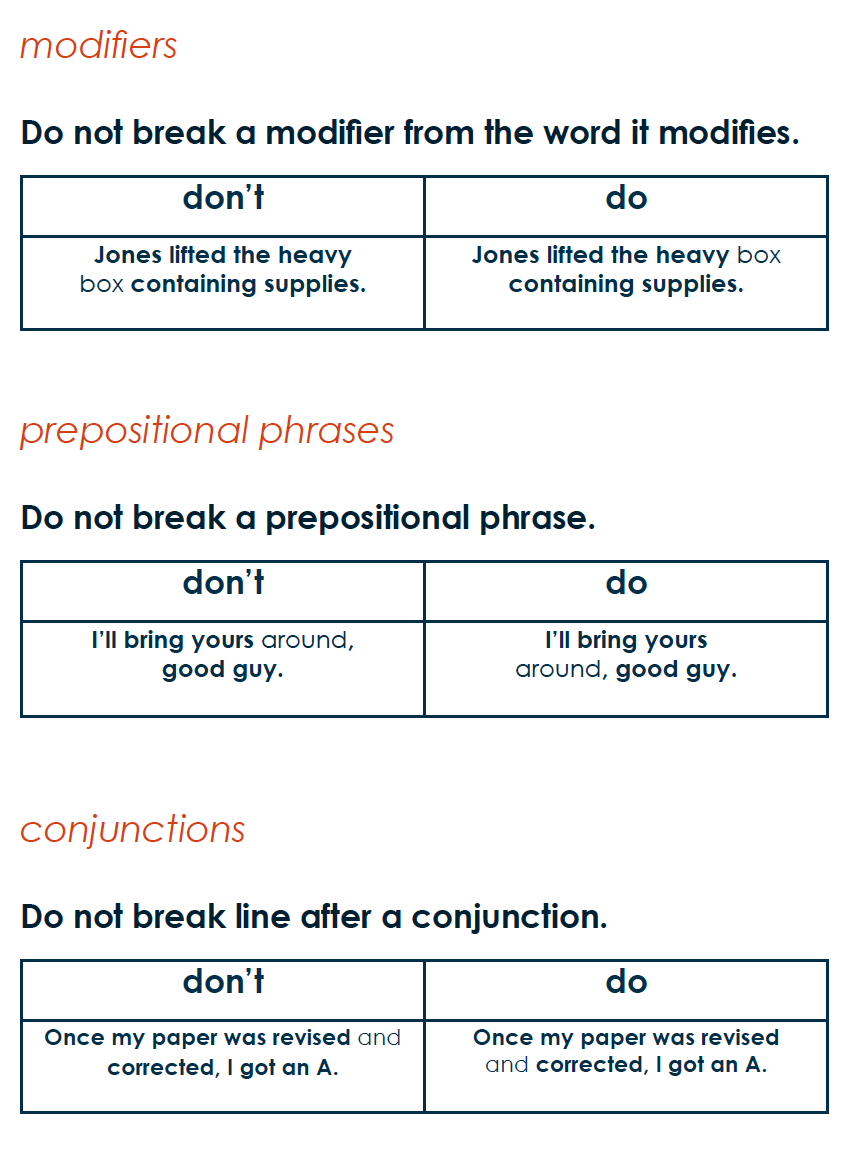

Lack of Transcribed Sounds
The following sequences demonstrate two closed caption examples of an Explainer directly asking the viewer what they heard after cracking a whip.
The first sequence shows the Explainer visually cracking a whip and there is no described sound. Then, the Explainer asks the viewer, “Did you hear that? At the end of the whip, this part right here is called the.” The second sequence also shows the Explainer visually cracking a whip except now there is text that reads, “[whip cracking].” Then, the Explainer asks the same question.
The second gives the viewer using assistive technology more information about the sound, where the latter does not. This also enhances the narrative.
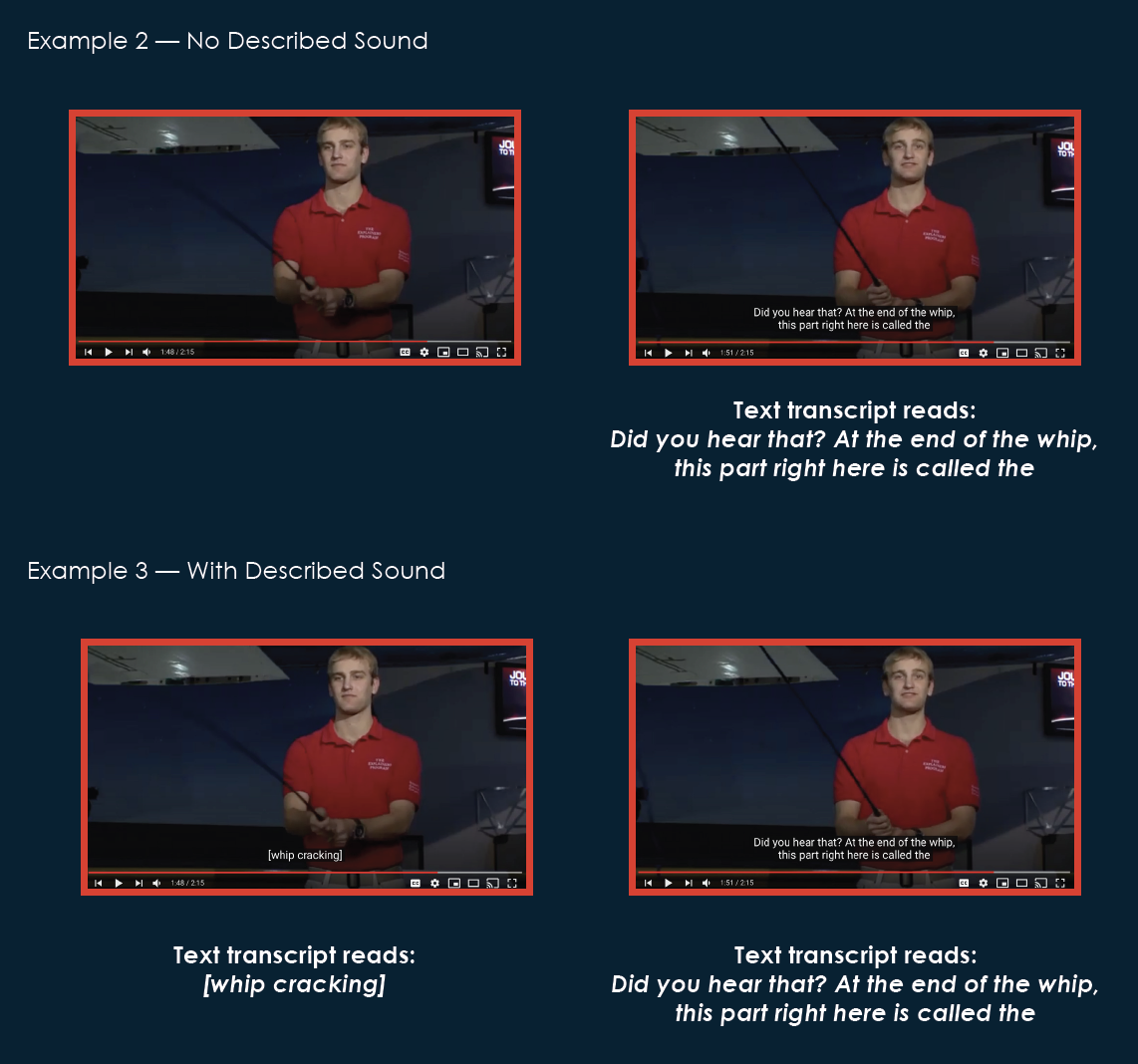
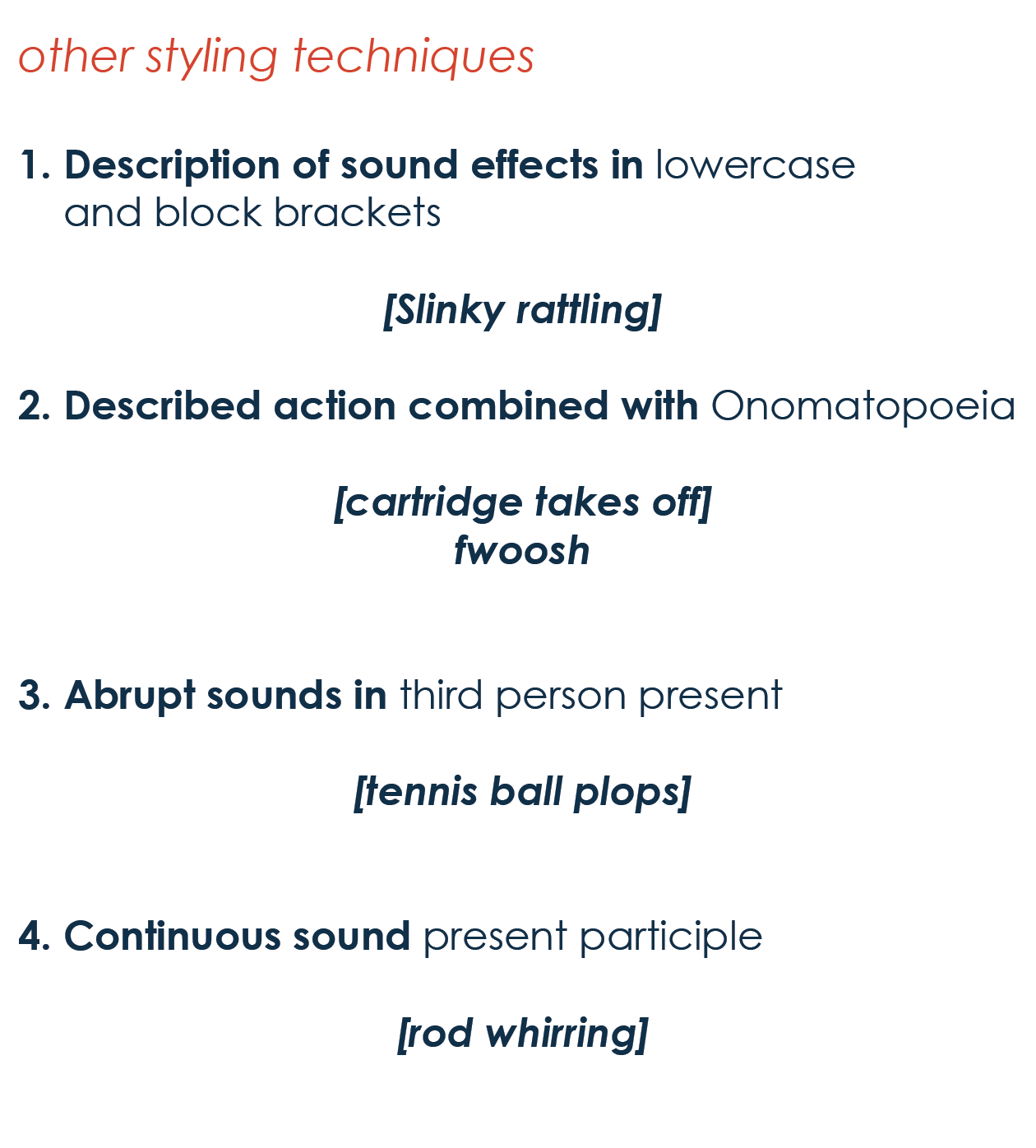
Implementation
These are two examples of transcribed videos using the updated captioning.
Both include transcribed sounds and line breaks to allow the transcription to be more readable and add to the narrative.
Conclusion
We should always keep in mind we want to create an equitable experience for our visitors. We must remember to design with intent. The following tools and resources can serve third party social media assets. Like other accessible materials, these are flexible for change and grow over time.